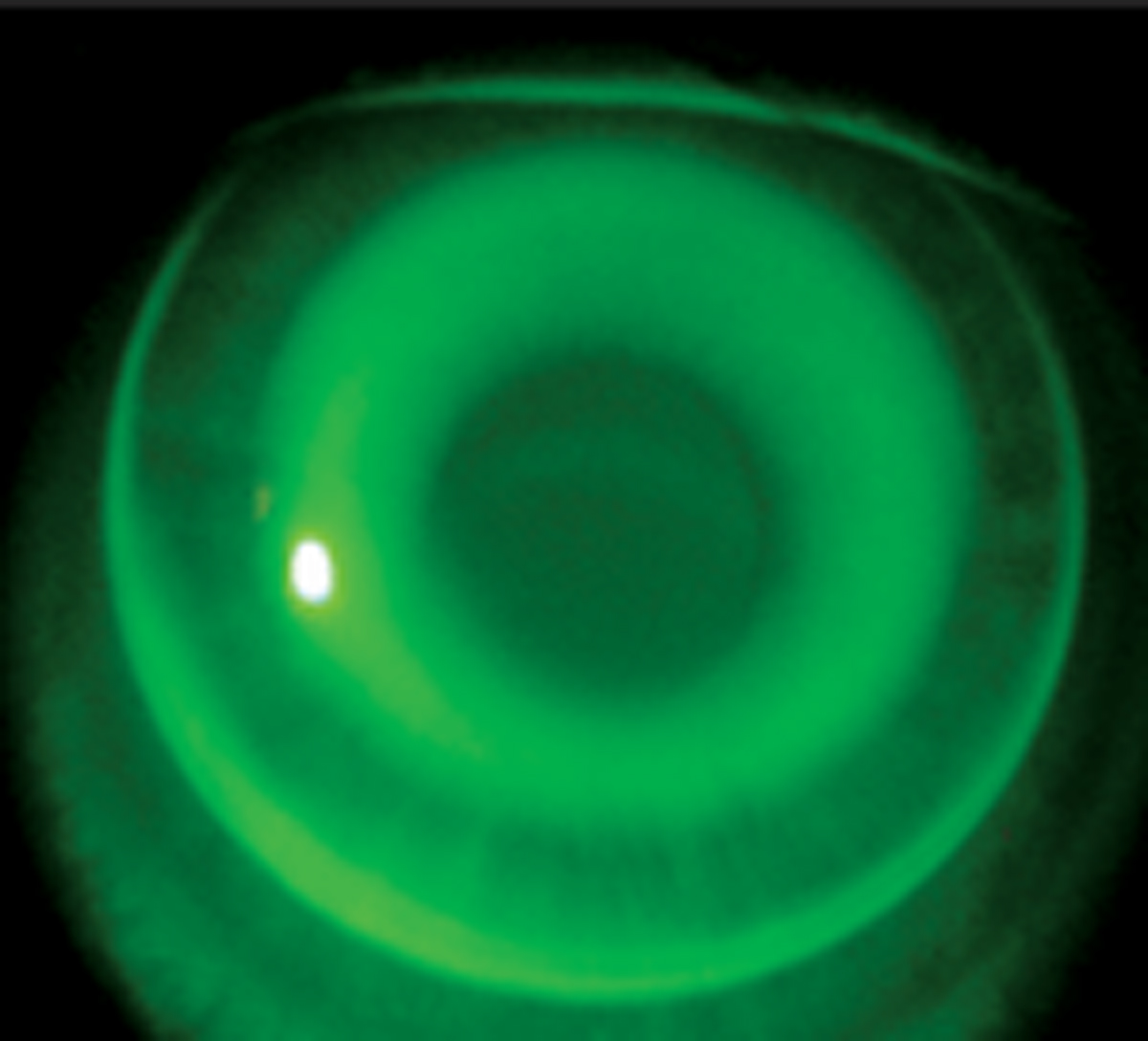 |
|
Researchers recently found a large magnitude of ocular residual astigmatism in myopic children, the majority of which compensated for anterior corneal astigmatism. Photo: Kenneth Daniels, OD. Click image to enlarge. |
Recent research assessing the correlation between ocular residual astigmatism and anterior corneal astigmatism among children with low and moderate myopia found that the magnitude of ocular residual astigmatism was relatively large in this patient population and mainly compensated for anterior corneal astigmatism.
Refractive and anterior corneal astigmatism was determined using subjective manifest refraction and the IOL Master, respectively. The study authors calculated ocular residual astigmatism and assessed the relationship between the amounts of ocular residual astigmatism and anterior corneal astigmatism through correlation analysis. A physical method was used to evaluate the relationship between the vectors of ocular residual astigmatism and anterior corneal astigmatism.
The right eyes of 241 children—ages eight to 18 years old—were analyzed. The researchers reported that the median magnitude of ocular residual astigmatism was 1.02D, with an interquartile range of 0.58D. They observed against-the-rule ocular residual astigmatism in 232 eyes (96.3%).
The data showed a significant and moderate correlation between ocular residual astigmatism and anterior corneal astigmatism. In 240 eyes (99.6%), ocular residual astigmatism compensated for anterior corneal astigmatism. The mean compensation value was 1.00±0.41D.
The findings also showed that the magnitude of the compensation values/anterior corneal astigmatism exceeded 1.00 among 6.7% (16/240) of eyes. After compensation effects, the data showed that 15.4% (37/240) had a different axial classification of anterior corneal astigmatism and refractive astigmatism.
“Evidence suggests that residual astigmatism might be more problematic than expected if orthokeratology was used. Measuring ocular residual astigmatism is equivalent to evaluating residual astigmatism that is not accounted for by the treatment,” the study authors stated in their paper. “Therefore, the ocular residual astigmatism should be assessed first before the completion of a course of orthokeratology.”
The researchers also emphasized the need for more attention to the specific impact of ocular residual astigmatism on the effectiveness of orthokeratology.
Lin J, An D, Lu YK, et al. Correlation between ocular residual astigmatism and anterior corneal astigmatism in children with low and moderate myopia. BMC Ophthalmol. September 19, 2022. [Epub ahead of print]. |


